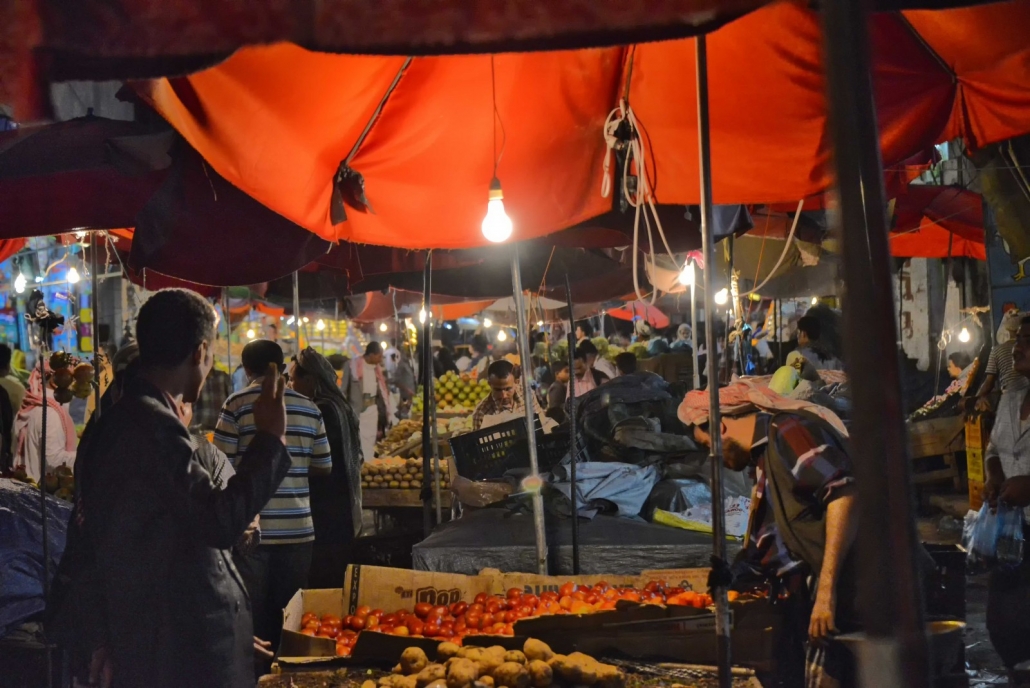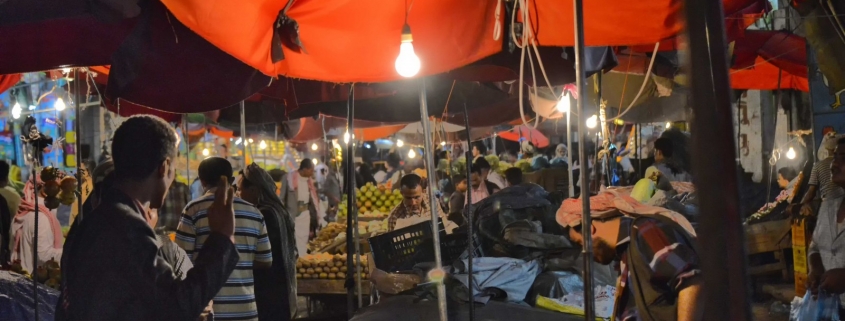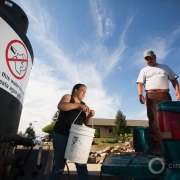HotSpots H2O: Water, Food Shortages Deadlier than Violence in Embattled Yemen

Al Hudaydah Market, Yemen. Photo courtesy of Wikimedia Commons.
More hunger is on the horizon for those enduring Yemen’s protracted conflict, now entering a fifth year.
Six out of 10 Yemenis, some 17 million people, will suffer severe food insecurity in 2019 without ongoing humanitarian assistance, warns a recent report from an international research network that identifies early signs of famine. A powerful combination of conflict, blocked imports, and poor crop-growing conditions has caused food prices to soar across the country.
Food insecurity, meanwhile, is made worse by water shortages, which are more deadly for the country’s youngest residents than the bullets flying around them.
A grim, new UNICEF report estimates that children under five in conflict zones are 20 times more likely to die from dirty water than from being shot. The report compared data on civilians casualties and diarrheal diseases in 16 countries, including Yemen, and found dirty water to be far more perilous.
“In Yemen, a child dies every 10 minutes from preventable causes, and many of those causes – malnutrition, cholera, diarrhoea – are related to unsafe water, sanitation and hygiene,” Omar El Hattab, UNICEF’s regional chief of water, environment and sanitation for the Middle East and North Africa, told The Guardian.
Water Shortages Worsen
The country’s ongoing civil war has shaken a country that was already struggling to provide basic services and staples.
In Hajjah province, which is controlled by Houthi rebels, the cost of a five-kilogram bag of rice is two and a half times higher than before the war, locals say. The cost of other food products, such as tomatoes, has increased five-fold.
“We eat only rice for lunch. Previously, we were living in dignity [but now] we are suffering here a lot. We do not have anything, we are without jobs,” Fatima Abdo Mohammed, a resident of southern Yemen, told Oxfam. Mohammed and other civilians report surviving on basic foods, such as rice and bread.
Not surprisingly, malnutrition–especially among children–has been a devastating problem during the conflict. UNICEF estimates that 360,000 children under the age of 5 have severe acute malnutrition. As Yemen’s food woes continue, their health is unlikely to improve.
The statistics for water are no better. An estimated 16 million Yemenis, or 55 percent of the population, do not have reliable access to clean water and basic sanitation. Between food and water shortages, millions of young Yemenis fall ill each year.
Aid groups are attempting to ease Yemen’s food and water insecurity, but violence and port closures are hampering efforts. El Hattab warns that the consumption of unsafe water will continue unless other options are provided. “Unfortunately, unsafe water, sanitation and hygiene reaches every household, and will still be demanded by people – if people are thirsty, they will drink any kind of water.”
The UNICEF report notes that increased targeting of civilian infrastructure, such as water plants, hospitals, and sanitation facilities, is a key reason for the high levels of water-related deaths. The report calls for a stop to indiscriminate attacks on civilian infrastructure.
“Water, sanitation and hygiene services should never be interrupted or politicised: access to safe water is a human right, not a privilege,” says El Hattab.
HotSpots H2O Yemen reporting from 2018:
HotSpots H2O, February 26: Spotlight on Yemen’s Ongoing Import Blockade
HotSpots H2O, June 18: Yemen’s Water Supply Jeopardized Again in Battle for Hodeidah HotSpots H2O, May 7: Yemen Risks Another Cholera Outbreak During Rainy Season, Ramadan
HotSpots H2O, September 24: Yemen at ‘Tipping Point’ of Famine as Violence Obstructs Food, Fuel Access
Kayla Ritter is a recent graduate of Michigan State University, where she studied International Relations and Teaching English to Speakers of Other Languages. She is currently based in Manton, Michigan. Kayla enjoys running, writing, and traveling. Contact Kayla Ritter




 © J. Carl Ganter / Circle of Blue
© J. Carl Ganter / Circle of Blue 







Leave a Reply
Want to join the discussion?Feel free to contribute!